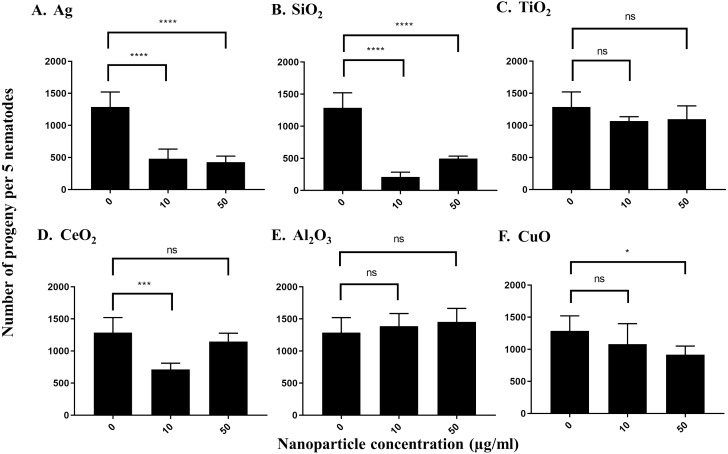Figure 3. Reproduction capacity of C. elegans N2 after exposure to various nanoparticles (A, Ag; B, SiO2; C, TiO2; D, CeO2; E, Al2O3; and F, CuO) at 0, 10 and 50 µg/ml.
200 L1s obtained from synchronization were seeded onto E. coli OP50-coated NGM plates and grown to the L4-young adult stage (48 h at 21 °C). Five L4-young adults were then transferred to a single well of a 12-well plate containing S-medium with corresponding concentrations of nanoparticles (0,10 and 50 µg/ml). Plates were then incubated for 96 h at 21 °C. The resulting total number of progeny was then calculated by dilution. Ag, SiO2 and CeO2 nanoparticles reduced the reproduction capacity in comparison with control significantly at 10 µg/ml (P < 0.0001). Bar-graphs represent average brood size ± standard deviation (SD) per five L4-young adult nematodes per condition.

